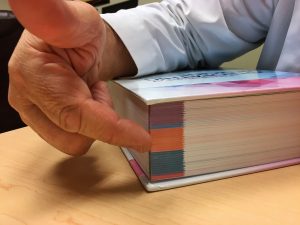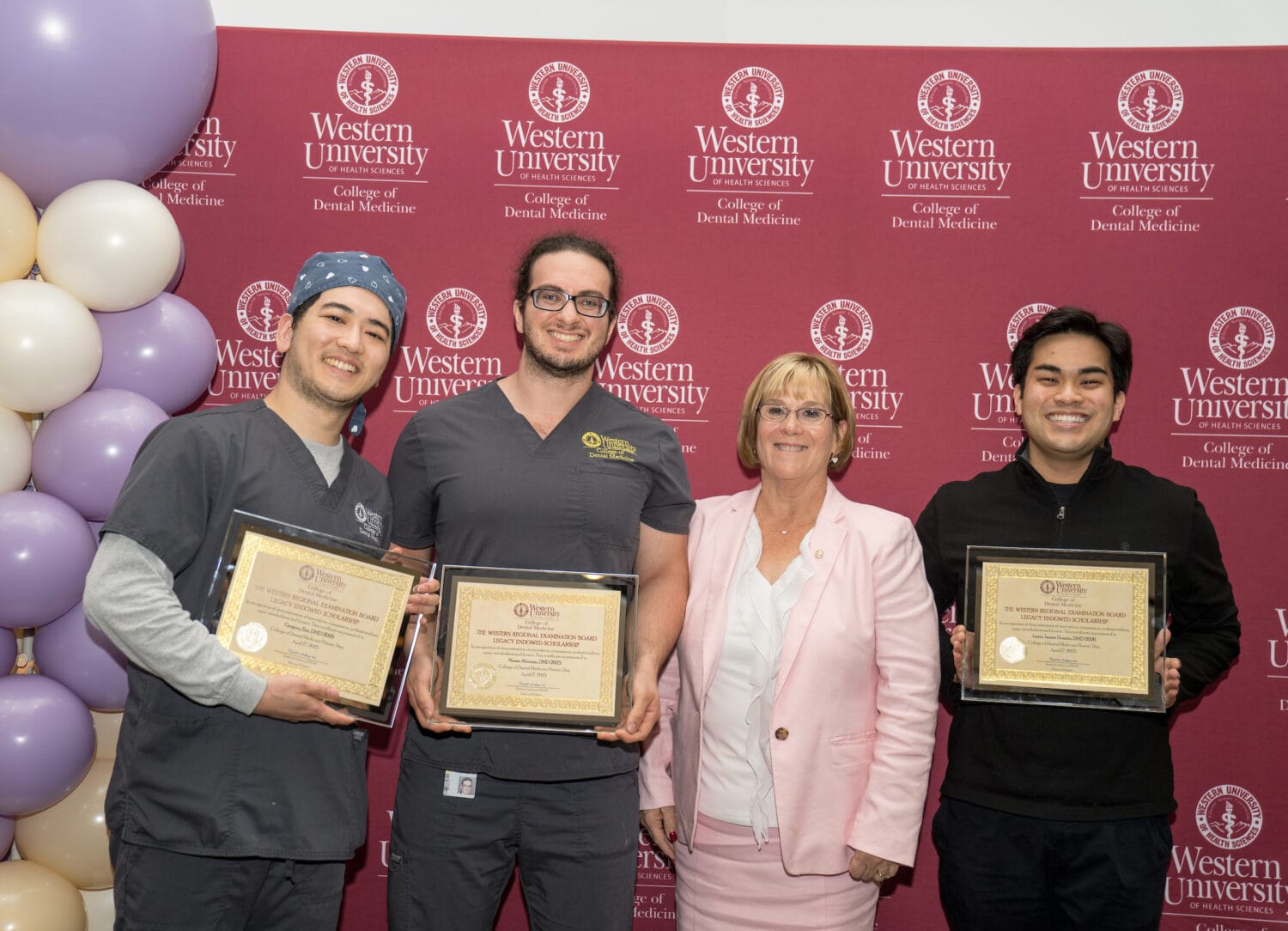COMP professors, staff, students and alumni have major impact on new national osteopathic medicine textbook

A Western University of Health Sciences professor served as executive editor of the fourth edition of “Foundations of Osteopathic Medicine,” released in December 2018. It’s considered the most authoritative and comprehensive resource on osteopathic medicine for students, physicians and educators and is required reading for first- and second-year osteopathic medical students throughout the U.S.
College of Osteopathic Medicine of the Pacific (COMP) Neuromusculoskeletal Medicine/Osteopathic Manipulative Medicine (NNM/OMM) Professor Michael A. Seffinger, DO, started editing the book about three years prior to its release, when the American Association of Colleges of Osteopathic Medicine (AACOM) Educational Council on Osteopathic Principles (ECOP), the Academy of Osteopathy (AAO), and the American Osteopathic Association (AOA) nominated him to put together the fourth edition. The nomination was supported by College of Osteopathic Medicine of the Pacific Dean Paula Crone, DO ’92, and NMM/OMM Department Chair Rebecca Giusti, DO ‘03. Seffinger has been associated with the national textbook project since its first edition published in 1997.
Seffinger led a team of about 60 COMP faculty, students, staff and alumni who contributed by editing, writing, formatting and illustrating. WesternU personnel made up more than half of the nearly 120 contributors to the textbook nationwide.
“The goal of this new edition is to guarantee the curriculum at each of the osteopathic colleges contains an osteopathic component to ensure each student graduates from any institution with the same osteopathic philosophy and principles of practice,” Seffinger said. “Faculty use this as a reference text for their test questions. It’s a very important book. It’s the only book of its kind that uses resources from across the profession.”
Faculty from most of the osteopathic colleges in the US, plus most of the major specialties, were involved in writing, reviewing or editing the book, according to Seffinger. It also describes how osteopathic physicians think, how they apply procedures such as osteopathic manipulative treatment, and how they use the osteopathic philosophy and principles in patient care.
Dr. Crone thought it important for Seffinger to be executive editor during work hours so that he could mentor other faculty and edit the textbook. She also encouraged COMP faculty to author or co-author material.
“Dr. Seffinger was instrumental in producing this new-edition textbook that is reflective of the dedication to teaching osteopathic medicine and philosophy at WesternU and throughout the nation,” Crone said. “It’s wonderful to see so many contributions from those associated with WesternU, which exemplifies how passionate and committed we are to educating future physicians.”
More than half of the fourth edition of the Foundations textbook has been rewritten, updated or added chapters. Whereas the second edition used an organ systems-based approach and emphasized osteopathic patient care in medical specialty practices, the third edition was primary care- and case-oriented. The fourth edition combined popular elements from the second and third editions, since some osteopathic colleges use a systems-based curriculum while others use a case-based approach. (COMP, among others, combines these two curricular designs.) Thus, the fourth edition is almost 50 percent larger than its predecessors — more than 1,600 pages — because it includes both systems-based and case-based chapters.
New chapters include: The Role of Inflammation in Healing and Homeostasis; Symbiosis: Ecology of the Human Microbiome; Energy Balance: Nutrition and Exercise; Lifestyle Medicine; Internal Organ Assessment for Visceral Motion Dysfunction; Assessing Viscero-Somatic Reflexes and Somato-Somatic Reflexes, Jones Tenderpoints, Trigger Points and Chapman Reflexes; The Osteopathic Physician-Patient Relationship; The Five Models of Osteopathic Care; Osteopathic Case-Based Learning; The Osteopathic Manipulative Treatment Prescription; Effectiveness and Safety of OMT; Research in OMT; and a series of new chapters exemplifying Osteopathic perspectives in specialty practices, e.g., Neuromusculoskeletal Medicine, Oncology, Endocrinology, Orthopedics, Cardiology, Pediatrics, Internal Medicine, Family Medicine, Geriatrics, Physical Medicine and Rehabilitation, Psychiatry, Surgery and Sports Medicine,
 The book includes color codes for separate sections and headings so readers can find their way through the book or within chapters more efficiently. It’s also colorized with photos and illustrations. Previous editions were in black and white.
The book includes color codes for separate sections and headings so readers can find their way through the book or within chapters more efficiently. It’s also colorized with photos and illustrations. Previous editions were in black and white.
COMP NNM/OMM Professor Ray Hruby, DO, MS, is the section editor for part 3: The Somatic Component, was a co-author on five chapters, and authored three chapters. He’s been involved in all four editions of the textbook, and proudly took on section editor duties when Seffinger asked.
“The somatic component refers to the neuromusculoskeletal changes (somatic dysfunctions) that are present in any given patient,” Hruby said. “Somatic dysfunctions may be due to postural, gravitational or biopsychosocial stresses, trauma, or may be reflections of pathological conditions involving internal organ systems.”
“This is really the heart of osteopathic principles and practice, and I have been teaching and practicing it for my entire career spanning five decades,” he added. “It is the major portion of our (NNM/OMM) department’s curriculum, and all of our department members contribute to teaching this to our students, and authored chapters for this textbook.”
Kendi Hensel, DO, PhD, FAAO, Chair of the Educational Council on Osteopathic Principles (ECOP) of the American Association of Colleges of Osteopathic Medicine (AACOM) and president-elect of the American Academy of Osteopathy (AAO), wrote in the foreword that the textbook represents the full spectrum of osteopathic professional activities, including the four pillars of osteopathic medicine.
“ECOP’s goal is for this fourth edition to continue to serve to increase the consistency of knowledge provided to our students and truly provide their osteopathic foundation,” she said. “We have been proud to partner with Dr. Seffinger to bring this edition to fruition.”
The textbook is published by Wolters Kluwer and endorsed by the American Osteopathic Association (AOA). It’s available through the WesternU Bookstore,Amazon.com and on the LLW website.



